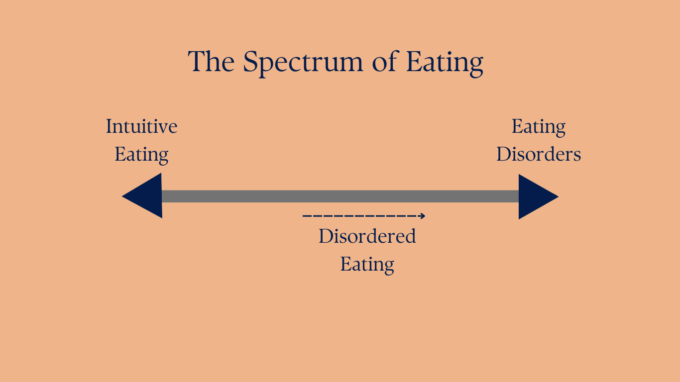
Eating happens on a spectrum.
On one side might be something like normal eating or intuitive eating. Whatever you want to call it, we are at this end of the spectrum when we are aware of and honor our body’s hunger/fullness cues most of the time, understand how different foods and food mixes make us feel, integrate sound nutrition science if desired and/or necessary without sacrificing mental health, see all foods as neutral, allow food to be more than just sustenance; eat without worry, guilt or shame; and more.
On the opposite end are clinical eating disorders (EDs). EDs include anorexia nervosa and atypical anorexia (which is actually much more common), bulimia, binge-eating disorder, and avoidant restrictive food intake disorder. Criteria to be diagnosed with an any given ED is strict by definition. EDs have the second highest mortality rate of any mental illness, lagging just behind opioid addiction. And while you might think EDs are rare, about 9% of Americans will struggle with one in their lifetime. That number is thought to be a conservative.
In between these two ends of the spectrum is a lot of gray space.
Continue reading “THE DISORDERED EATING SPECTRUM: FROM INTUITIVE EATING TO EATING DISORDERS”


